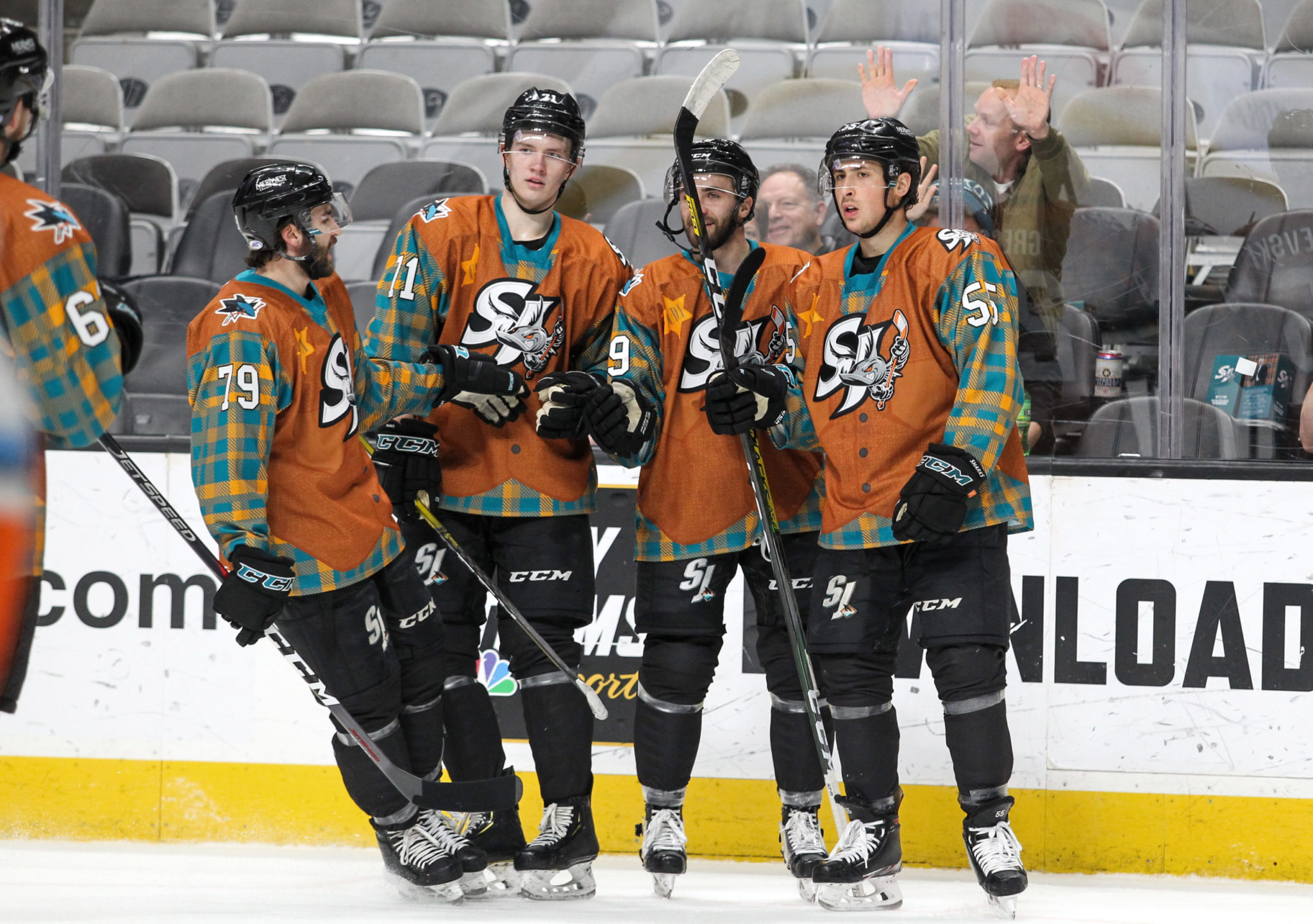San Jose Barracuda
Deep Dive into San Jose’s Prospects, Part 1: Introduction

Which San Jose prospects should Sharks fans be most excited about? We’re going to take a look in this multi-part series, from the players least likely to make the NHL to the organization’s most intriguing prospects.
From A(lexander True) to Z(achary Émond), we’re going to talk about every San Jose Sharks prospect.
Who’s a Prospect?
By my count, San Jose has 33 true prospects, give or take, under organizational control. That number will change quickly depending on whom the Sharks re-sign this offseason and how you define “prospect.”
Namita Nandakumar, formerly of the Philadelphia Eagles and now of the Seattle Krakens, offers a good definition: 40 games played in a single season is effectively full-time NHL duty. In an article she notes that GMs care more about the 40-game threshold than the nine-game benchmark that burns one year of an entry-level contract (ELC).
Why? Because once a player is on the active NHL roster for 40 games, he accrues one season toward unrestricted free agency. With that as our starting point and a bit of subjectivity, we can determine who is still a true prospect.
For example, Noah Gregor played in 28 NHL games during the 2019-20 season. Had he played the remainder of the season’s games, he would have been on the active roster for exactly 40 NHL games. For this reason, by definition Gregor can be considered an NHL’er, even if he may not play the entire next season with the San Jose Sharks.
Alexander True, on the other hand, only played 12 NHL games this season. Despite his impressive performance as a depth center, it’s tough to consider him anything other than a prospect. Dylan Gambrell played 50 NHL games this season and so is officially an NHL’er.
Jayden Halbgewachs and Maxim Letunov are pending restricted free agents. Halbgewachs is 23 and Letunov 24, which makes them too old to be considered prospects with any sort of upside. Yet, Assistant General Manager, Joe Will praised both players unprompted during an end-of-season interview. Until we know that the organization has moved on from both players, we’ll consider them both Sharks prospects.
That leaves us with 22 forwards, four goalies, and seven defensemen who have not yet played their age 22-23 season or are an exception. Those exceptions include Danil Yurtaykin, who is 23 but was signed as a European free agent before last season; the aforementioned Halbgewachs and Letunov; True, who just turned 23 but who has already demonstrated some NHL aplomb; and, Jérémy Roy, who has suffered two unfortunate knee injuries already but was a high (second-round) draft pick.
It can be difficult to understand the sort of chances each of these players has at becoming a regular NHL contributor. Admittedly, the best I can offer is how well each player is progressing according to publicly available prospect research and comments from the organization where possible. That should at least provide a common denominator we can use to evaluate these players.
Key Terms
One thing to familiarize yourself with as we learn about these players is the common draft-year (DY) terminology. The season before a player’s first-time eligible season is their “D-1” season. Likewise, the season following a player’s first-time eligible draft season is their “D+1” season, and so on.
We’ll also look at NHL equivalency (NHLe) scoring rates. NHLe calculates how much of a player’s scoring rate he retains when he moves from a given league to the NHL. I’ve aggregated and averaged a handful of different NHLe calculations for the major non-NHL leagues. For the more obscure leagues, we’ll use an average of CJ Tutoro and Emmanuel Perry’s calculations.
The main way we’ll determine a player’s progression is by looking at a player’s NHLe in a given league relative to their age. Nandakumar’s research on prospect timelines will be instrumental here.
For example, her research shows that about 72 of every 100 skaters drafted in the second round eventually play one NHL game. A bit more than half of those players will play their first NHL game by the end of their D+3 season. This means that players like Dillon Hamaliuk and Artemi Kniazev will be in the minority if they fail to clear at least one NHL appearance by the end of the 2021-22 season.
Her research also shows that “the median prospect who makes an NHL roster takes about four seasons to do so,” and that very few eventually play an NHL game if they haven’t done so by their D+5 season. If a player’s first-time draft-eligible season is their age 17-18 season, then their D+5 season is their age 22-23 season, which is why we’ve made that age our cutoff for “prospect” status.
With those basics under our belt, we can now dive into the San Jose Sharks’ prospect pool. Here are the players we’re going to look at:

Credit: JD Young
“A Deep Dive into San Jose’s Prospects, Part 2: Time’s Up” coming soon!
















